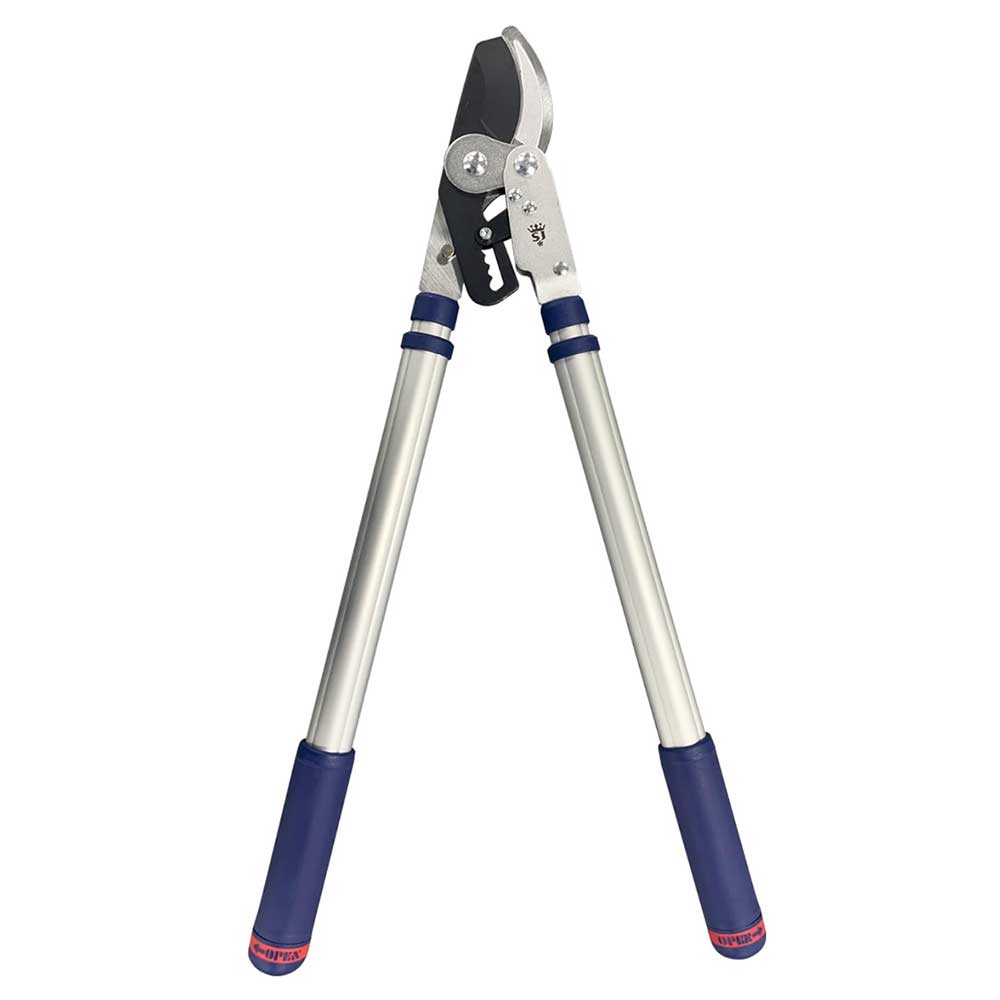Can you cut overhanging branches from a neighbour's tree? Experts share legal rules and regulations
It's an all-too-common occurrence that can often lead to disputes if one party is not abiding by the correct guidelines


We've probably all encountered the dilemma of an overgrown tree causing frustration. But many of us are still unsure whether you can freely cut the overhanging branches from a neighbour's tree, or if you need permission.
No matter what glorious garden trends lie on the other side of the fence, you might not always appreciate overhanging tree branches, particularly if the tree falls into the category of intrusive plants or those toxic to animals.
To understand how best to approach this issue, we've asked a range of legal experts and professional gardeners to outline the rules and share tips on how best to go about pruning the imposing branches.
Can you cut overhanging branches from a neighbour's tree?
If a neighbouring tree is overstepping the acceptable level of a privacy plant and encroaching on your garden, do you have the right to cut the branches back?
"If your neighbour’s tree is growing over the boundary into your garden, you are allowed to cut back any overhanging branches but only up to the boundary line," says Robert Dellow, a partner at the law firm Atkins Dellow LLP.
"You don’t need permission to do this, but you can’t go onto their land to carry it out, even if it seems like the quickest way to get it done," Robert stresses.
"It’s usually worth mentioning your plans beforehand just to keep things neighbourly. That conversation can help avoid misunderstandings and might even make things easier if their tree needs regular maintenance."
Sign up to our free daily email for the latest royal and entertainment news, interesting opinion, expert advice on styling and beauty trends, and no-nonsense guides to the health and wellness questions you want answered.

With over three decades of experience in law, Rob has helped business owners, entrepreneurs, investors, and families navigate everything from commercial property deals to business advice and personal legal matters.

Overhanging branches from a neighbouring tree
“Firstly, ensure the tree isn’t protected in any way," warns Dean Meadows, principal Arboriculturist and Tree Risk Management Lead at Arbtech.
"Trees in the UK may be covered by Tree Preservation Orders (TPOs), located within Conservation Areas, or subject to the Felling Licence system, all of which require you to seek permission before carrying out any work."
“If it’s not protected, you can prune branches up to the property boundary," Dean confirms. "Any further than this could be considered damage to your neighbour’s property, potentially leading to legal action."
So there you have it, you can cut overhanging branches from a neighbour's tree up to the boundary of your property. "This is classed as the right to abate a nuisance," says Graham Smith MCIHort, a horticultural expert from LBS Horticulture. "But you must not trespass onto your neighbour's property to cut the branches without their permission."
See our tips from a professional gardener below on cutting back overhanging branches properly.
Can a neighbour throw overhanging branches back?
This is the element many disagree on. The overhanging tree is the property of your neighbour, but if you choose to cut back the branches, are they then your responsibility to dispose of? Can you dispose of them over the fence? Or can the remnants go straight into your compost pile?
"Legally, the cuttings still belong to your neighbour, so you should offer them back rather than disposing of them straight away," advises Robert from a legal standpoint. "That doesn’t mean tossing them over the fence, though, because doing that without consent could cause more problems than it solves."
"Discarding them back over the fence could be regarded as fly-tipping of garden waste," says Dean.
So what should you do with the off-cuts? "Any removed branches should be offered back to your neighbour," advises Graham. "If the neighbour does not want the cuttings, you are responsible for their disposal."

Graham has extensive knowledge in the horticultural and gardening industries, and prides himself on using this to help gardeners of all skills create their perfect outdoor space.

Who pays to cut back overhanging trees?
If you are considering hiring a professional to cut back the overhanging tree, you might expect the neighbour to pay, given that it's legally their property. But that is not the case.
"You’ll need to cover the cost of any work, even though the tree belongs to your neighbour," Robert explains. "If you’re hiring a tree surgeon, that expense is yours unless your neighbour has agreed to split the bill or take responsibility in writing. It might feel unfair, but that’s how the law tends to see it. You're choosing to cut it back, so the cost is on you."
Dean adds: "In cases where the tree is causing damage due to your neighbour’s negligence, you may request that they cover the expenses. However, unless agreed otherwise, the cost of any work you commission typically falls on you.”

Dean is a principal Arboriculturist and tree risk management lead at Arbtech, with over 10 years of experience in arboriculture and tree risk management.
Expert tips for pruning an overhanging tree
I've recently encountered a friend who has had a bad experience with cutting back overhanging branches from a neighbour's tree, so I would advise being cautious with how much you cut.
We've asked professional gardener Orpheus Alexander to share his top tips on how to approach the pruning process, whether cutting back a magnolia tree or pruning a conifer.
"Once you’re all set and ready to go, be careful not to damage the tree, or you could be liable for any harm caused," he warns. "Not only are trees expensive to replace, but they are an important part of the local ecology, so we want to avoid having to replace them because of a clumsy cut. Poorly executed cuts can allow infection into the tree, and therefore, consideration is needed."
Here are Orpheus' three top tips:
- Consider the timing: "For most trees, late autumn or winter is the best time to prune, when the tree is dormant. Cuts made in the growing season can weep sap and attract pests or disease."
- Use the three-cut method: "When cutting a branch, always use the three-cut method - it stops the bark from tearing and helps the tree heal properly. Here’s how to do it: First, make a small cut on the underside of the branch, about 20–30cm out from where you want the final cut. Only cut up about a third of the branch. Then make a second cut from the top, a few inches further down the branch from your first undercut. Cut through here. Finally, if you can reach it, make a clean third cut just outside the branch collar (that’s the natural swollen join between trunk and branch. It’s where the tree seals itself off most effectively, reducing the risk of rot or disease). If you can’t reach that, then do a final clean cut where you would like the branch to end.
- Call in a professional if needed: "If the branch is large, high up, or hanging over something like a shed or neighbour’s fence, don’t try to tackle it yourself. You could cause damage or harm. Call in a professional with the right gear."

Orpheus is a gardener, designer and lifelong plant enthusiast with a hands-on approach to creating natural, welcoming spaces. He is passionate about working with nature to design gardens that feel alive, seasonal, and personal. He also shares practical tips and behind-the-scenes glimpses of his projects on social media, where you’ll often find him talking plants, design ideas, and the joys (and challenges) of real-life gardening.

RRP: £36 | These telescopic loppers are ideal for getting at those hard-to-reach branches.

RRP: £12.95 | Made from premium titanium steel, these professional secateurs can cut up to 3/4" diameter tree branches.
Armed with all the correct information, you can now approach the task of pruning back the overhanging branches, safe in the knowledge that you are abiding by the correct garden etiquette. Having a polite conversation with your neighbour first will also ensure no bad feelings from the get-go.
If you have offered the branches back and your neighbour has said you can 'keep' them, you might want to check the guidelines on what garden waste you can burn in case the overcuts are not suitable.

Tamara is a highly experienced homes and interiors journalist with a career spanning over 22 years. Now the Lifestyle Editor of womanandhome.com, she previously spent 18 years working with the style teams at Country Homes & Interiors and Ideal Home. With these award-winning interior teams, she gained a wealth of knowledge and honed her skills and passion for styling and writing about every aspect of lifestyle and interiors.
A true homes and interiors expert, Tamara has been an ambassador for leading interior brands on multiple occasions, including appearing on Matalan’s The Show and presenting at top interior trend forecasting events such as the Autumn Fair and Spring Fair.